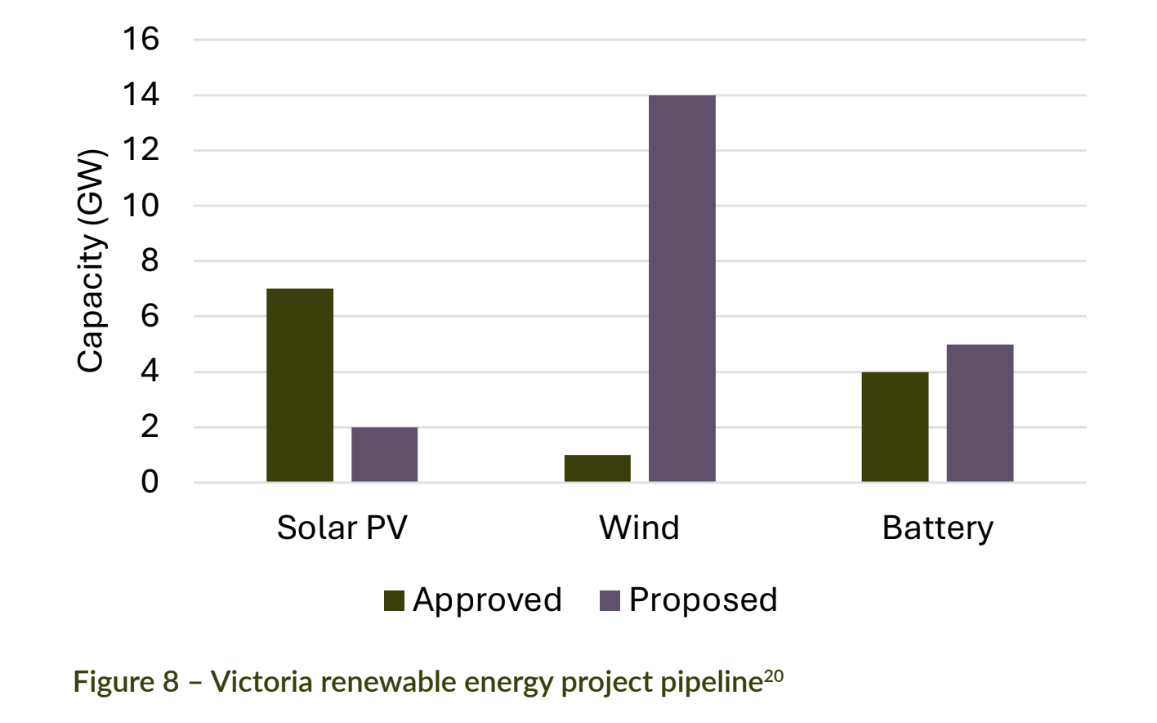Key findings:
- A third of the time, Yallourn is experiencing an unexpected outage.
- Unless the Victorian Government closes Yallourn and unlocks the huge pipeline of proposed renewable energy projects, the state will struggle to meet its emissions reduction targets and more importantly keep the lights on.
A third of the time, Yallourn is experiencing an unexpected outage
Victoria's Yallourn Power Station, in the Latrobe Valley, has experienced severe operational challenges in recent years, according to a report from Nexa Advisory.
Thirty-two percent of the time in 2024, the coal-fired power station was experiencing an unplanned outage for at least one of its four generators.
"Unplanned" outages, as a category, does not include periods of time when a generator is closed for maintenance. If you include all outages, each of the four generators were down for roughly 12 weeks each year.
The ageing power station is due to close in 2028, and Nexa's report suggests it is limping to the finish line.
Stephanie Bashir, CEO at Nexa Advisory, said:
"Right now, there is a one in three chance that there's an unplanned outage happening at Yallourn Power Station.
"The sheer volume of unplanned outages is quite alarming for a power station that is still responsible for a significant proportion of electricity in Victoria.
"Yallourn is clearly limping to the end of its operational life. Today's dynamic electricity market demands generators that respond quickly to price signals – coal-fired power stations were built for a different era."
Unless the Victorian Government closes Yallourn and unlocks the huge pipeline of proposed renewable energy projects, the state will struggle to meet its emissions reduction targets.
Yallourn Power Station is responsible for approximately 12 million tonnes of CO₂ annually, partially due to the brown coal, which emits more carbon pollution than black coal used in New South Wales and Queensland.
The Victorian Government has set a 45-50% emissions reduction target on 2005 levels. Closing Yallourn by itself would represent half of the emissions reduction required by Victoria to achieve this target.
There is no shortage of clean renewable energy projects in the pipeline. There is a 16GW pipeline of proposed wind and solar projects, as well as 5 GW of proposed battery projects – and that's not even including the various offshore wind development projects that have received feasibility licences.
The ongoing delay of new transmission projects, particularly transmission interconnectors, is a roadblock to ensuring the renewable projects are approved and connected. This poses significant threats to power system security and increases costs for consumers both large and small.
Victoria has seen ongoing transmission delays and associated cost increases – including from VNI West, which has seen a 23% cost increase in recent years. This is now not expected to be delivered before 2031 well after Yallourn closes.
Stephanie Bashir said:
"Victorians deserve clean, cheap energy – and renewable developers are lining up to build it.
"But none of it will happen without an overarching plan and clear planning approval processes for transmission and renewable projects from the Victorian Government – particularly onshore wind. These will be crucial to ensuring reliability after the closure of Yallourn."
"A more radical approach is needed to ensure we build this critical infrastructure on time, to keep the lights on and ensure the impacts of delays are not borne by energy consumers."
Enquiries







